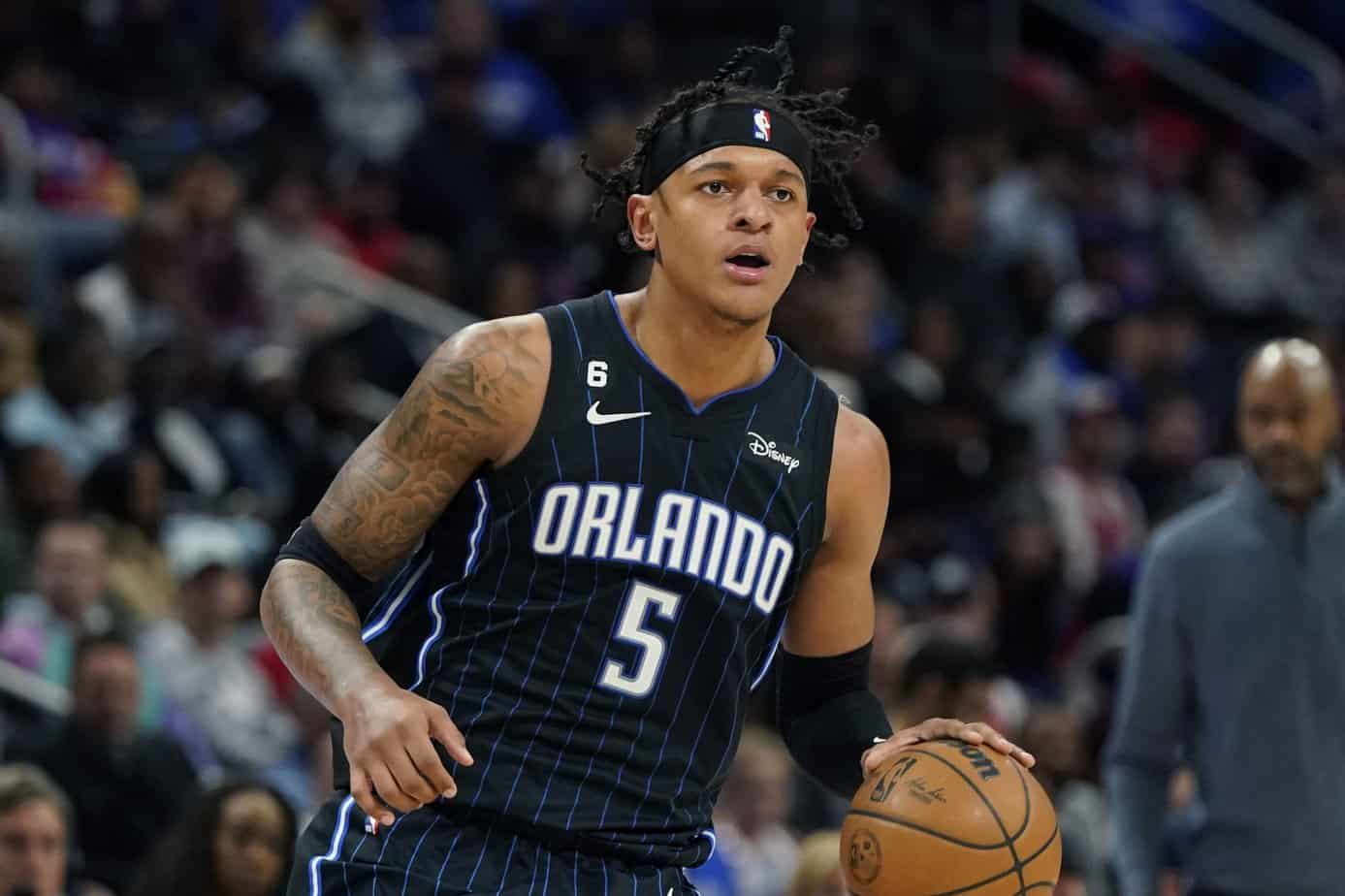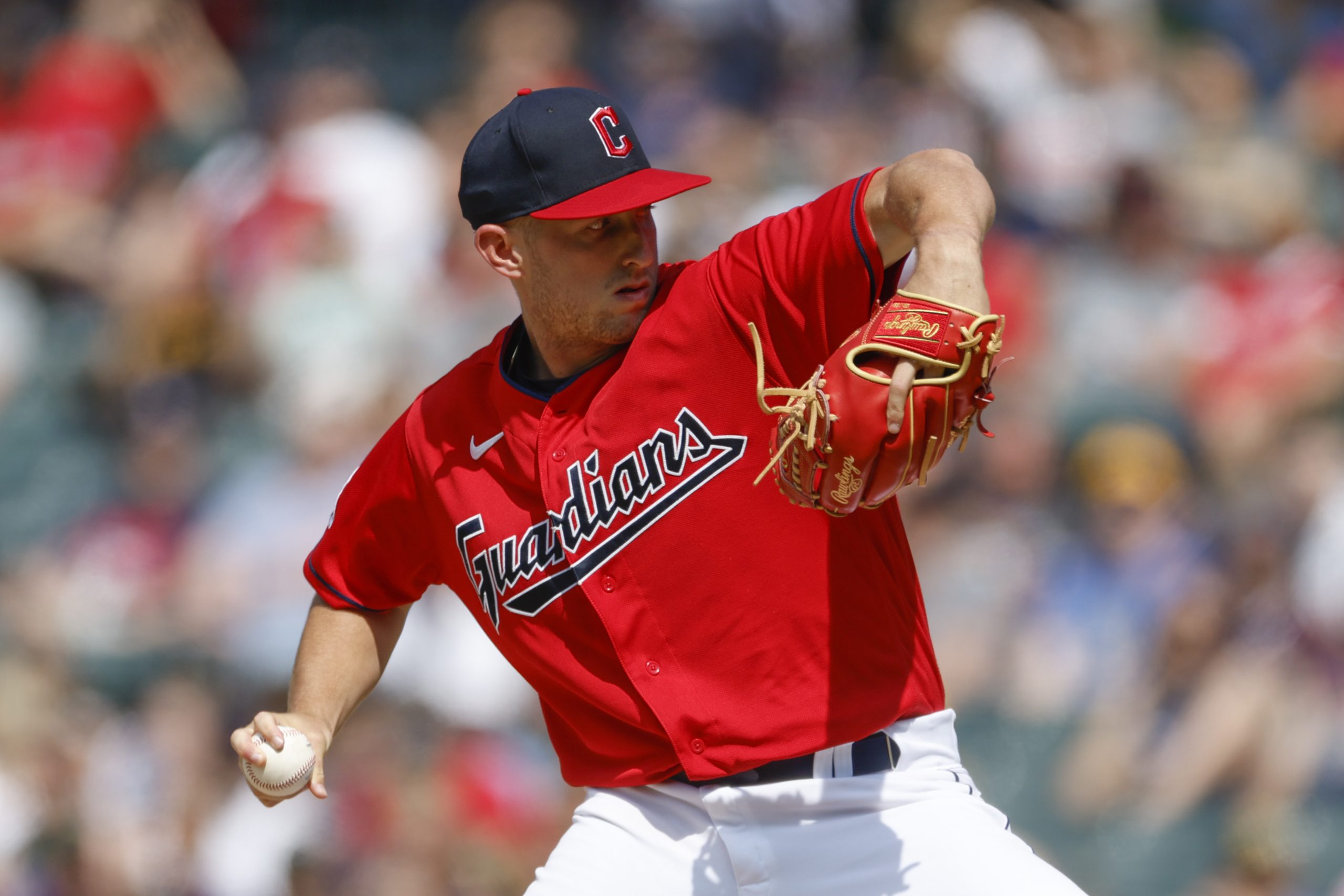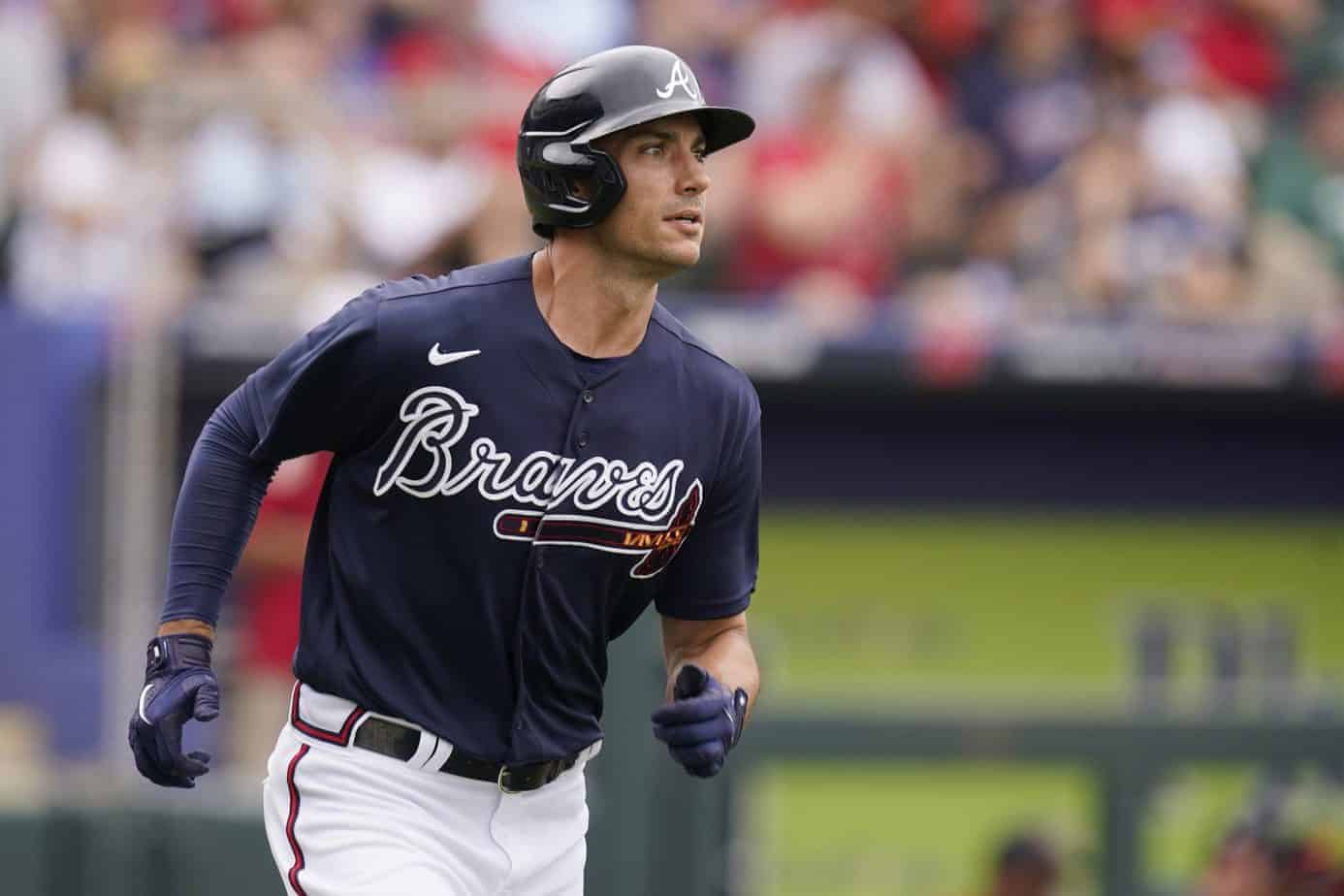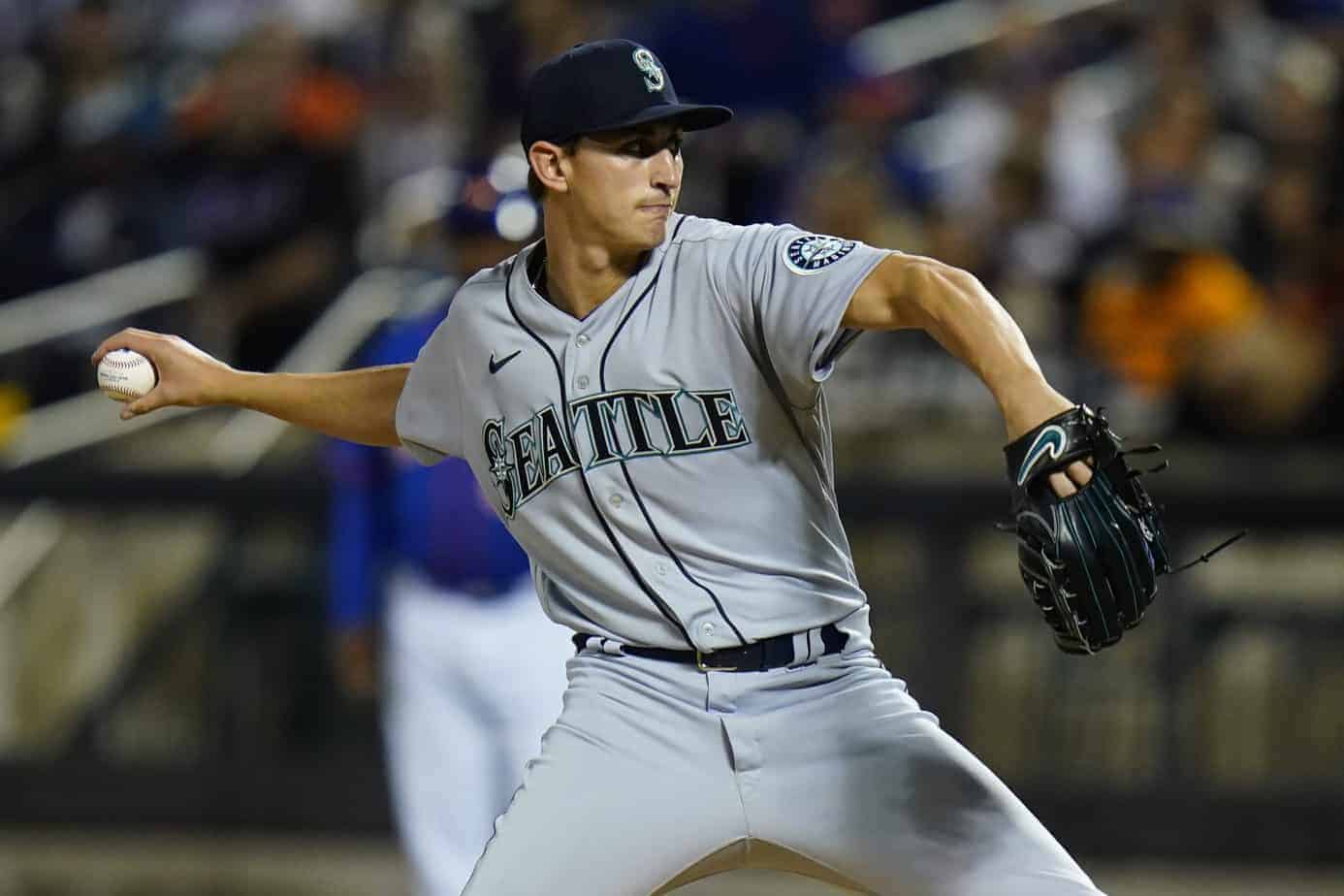Following NASCAR’s Super Bowl break, racing action returns on Thursday, Feb. 17 for the Bluegreen Vacation Duels at Daytona International Speedway. Thus, let’s go over game theory, NASCAR DFS strategy and how to approach making some NASCAR fantasy picks for DraftKings and FanDuel lineups this week.
NASCAR DFS Primer: 2022 Bluegreen Vacation Duels at Daytona
Why the Bluegreen Vacation Duels?
Before answering the question of why NASCAR uses the Duels to set the field for its first and most important race of the season, the ground rules need to be set about what the Duels are. Going all the way back to 1972, NASCAR has used a set of qualifying races to establish the running order for the Daytona 500, in a way like last week’s heat races at the Busch Clash. This is one part due to the intrigue that it has forced certain teams to have to race their way into the Daytona 500. Second, it is deemed a fairer system than which teams can just put the maximum amount of trim and tape on their car for a single-lap run, especially decades ago when over 60 competitors would attempt to qualify for this event.
On Thursday evening, as outlined in the Bluegreen Vacation Duels NASCAR DFS Preview article, the first Duel will be held around 7:00 PM Eastern and the second will kick off shortly before 9:00 PM. Each of these races will be just 60 laps and the outcome will dictate the final running order for Sunday’s race. The only positions that will not change will be the fastest and second-fastest qualifying times on Wednesday evening prior. They are locked into the starting front row and cannot lose that position, regardless of their performance in the Duels. Fading these drivers is a rule of thumb in the Duel races, as they have no incentive to be competitive and generally fall back in the pack just to finish the event.
With today’s chartered system, NASCAR has guaranteed 36 squads that they will start on Sunday. Thus, just four open spots will be up for grabs for these charterless teams. This is where the relevance of the Duels makes itself known. While an official entry list has yet to be released, it appears that six drivers will fight for these four open spots.
Stack the Back
When Daytona is discussed in DFS circles, most people just blindly start chirping to stack the back and how these types of slates are supposedly easy money. For those unfamiliar with NASCAR DFS jargon, stacking the back simply refers to playing drivers in the rear of the field due to the volatility that comes with Daytona. This 2.5-mile superspeedway is known as a great equalizer that makes one car nearly indistinguishable from another due to factors like the draft and wreck rates. Thus, in a highly volatile race, relying on scoring factors like finishing position points and place differential becomes the safer way to build lineups. More often than not, lineups based on those two metrics manifest themselves in the optimal lineups on both DraftKings and FanDuel. It is a rare duality in this sport where the safest path is also the optimal path in cash and tournaments.
Just because that sort of lineup construction will work on Sunday does not mean it is what should be deployed Thursday night in the Duels. Drivers and teams alike treat these races differently from the Daytona 500. Ultimately, where a driver starts on Sunday will be a giant formality, as they will move around the grid multiple times from top to bottom and from the front to the rear. Drivers just want to finish the Duel races in one piece as squads work on the weekend to get a backup car ready for the race. The only drivers with any fire on their backs will be the unchartered teams, and their race will simply be against one another.
This lack of real competitive events should be further exacerbated this year due to the car and parts shortage most teams are facing as the Gen-Seven car rolls out. Some of the lesser-funded squads come into Daytona without a full fleet of vehicles (six) for this season, much less the necessary parts needed in case repairs need to be made. Unchartered teams like Beard Motorsports have just one vehicle at their disposal. Qualifying for the Daytona 500 will be meaningless if they wreck their only vehicle and have nothing to race with on Sunday. A wreck on Thursday could go a long way in setting back any team, especially as the schedule will see NASCAR leave for the West Coast for a three-week swing immediately following Daytona.
NASCAR DFS Implications
If drivers are not getting racy and moving around, it could have big implications for fantasy NASCAR lineups and NASCAR DFS picks.
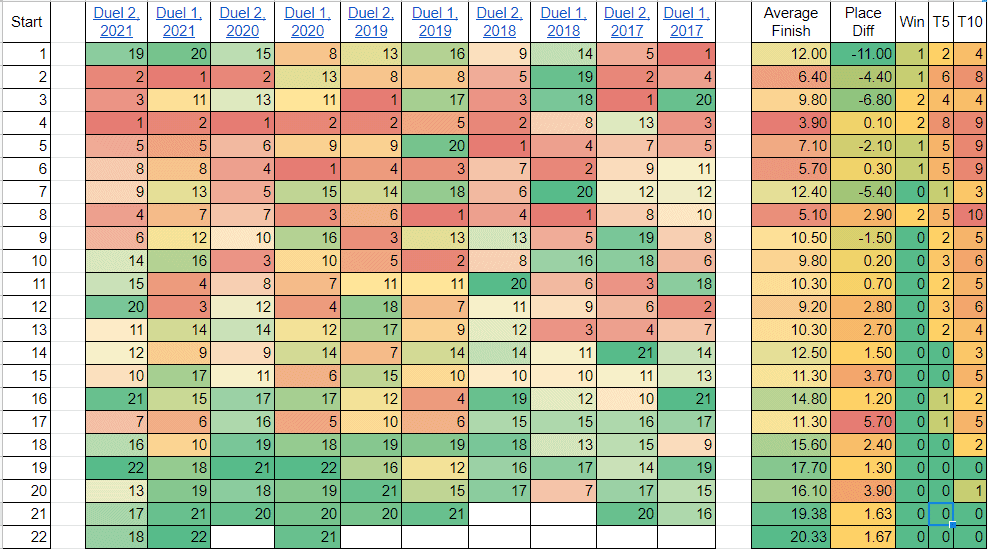
Pictured above is the finishing position of every driver, relative to where they started, in each Duel event going back to 2017. Next to these finishing position numbers are the averages DFS players should be most concerned with. This is where drivers are normally ending their race, and how much place differential they are either losing or gaining in the process.
The first thing to note is in regards to stacking the back. As a rule of thumb, these drivers might all be gaining positive place differential but it is generally minimal, as in one to two spots. They never force their way into a Duel victory and very rarely are they getting so competitive as to actually end their day in the top-five. In fact, since 2017, of all drivers who started 14th or worse in the Duel races, just two out of 81 drivers have finished their evening in the top-five. When that number is expanded to a top-10 finish, it only jumps to 18 drivers. Why does this matter? Using these drivers because of their perceived upside (place differential + finishing position) is a parlor game when these drivers do not actually try to finish high. For the majority of drivers starting this far back in the Duels, they posted a slow qualifying lap (underfunded equipment relative to the field), and they are just trying to finish the race and get ready for Sunday.
So who should DFS players be targeting in their lineups? With so few laps led points available (six on FanDuel, 15 for DraftKings), the top-scoring drivers are going to be those with high finishes who grab a few place differential points in the process. According to the above heat map, the top average finishers according to starting position come from the fourth, eighth, sixth, second, fifth, 12th, third, 10th and 11th drivers. At most, these drivers are generally picking up about three spots, if any at all, but they are consistently bringing home top-five or top-ten finishes.
A core of drivers starting fourth through ninth should be a good place to start for all lineups, whether in cash or tournaments. This protects DFS players from the pole sitters who are just waiting to drag down a roster and the backmarkers who are just looking to finish. It gives them a solid range of drivers who can actually gain position while actually finishing in the range that is going to award the most fantasy points.
Thanks for reading to the end of this article! If you appreciate this free content and want to see more of it every day, you can help us out by sharing this article on social media!
[NASCARPAGE]

